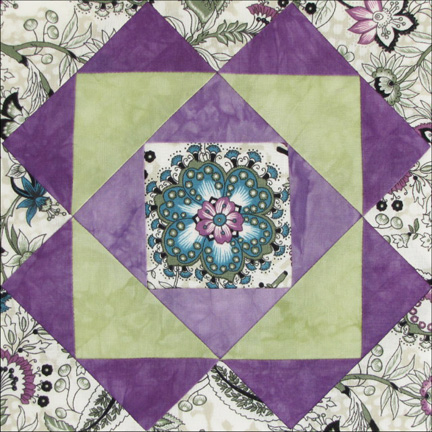Gentleman's Fancy
By Becky Brown
In 1838 three antislavery activists published their research
in American Slavery As It Is: Testimony
of a Thousand Witnesses.
Theodore Weld, Angelina Grimké Weld and Sarah Grimké used a clever source for their "cloud of witnesses." They analyzed runaway slave advertisements in Southern newspapers that outlined the scars, brands and burnt faces, missing eyes and hands that owners described in painting a verbal picture of the runaway who, it was often alleged, had been "well treated."
Theodore Weld, Angelina Grimké Weld and Sarah Grimké used a clever source for their "cloud of witnesses." They analyzed runaway slave advertisements in Southern newspapers that outlined the scars, brands and burnt faces, missing eyes and hands that owners described in painting a verbal picture of the runaway who, it was often alleged, had been "well treated."
Angelina Grimké Weld & Sarah Grimké after the Civil War.
Weld and the Grimké
sisters were the first to use slave ads for a primary source, followed
to this day by others from textile historians to genealogists. Runaway slave ads sometimes include children, as in this one
from their book:
Bet ran away from a sadistic master who burned her face. "Her children are both boys, the oldest in his seventh year; he is a mulatto and has blue eyes; the youngest is black and is in his fifth year."
We can parse a good deal about Bet from the ad including the
all too common fact that her children had different fathers with the eldest
probably the son of a white man in the owner's family. We can guess Bet had no
right to choose her first sexual partner. She and many other suffered under a 19th-century update on
the feudal droit du seigneur, the
medieval lord's right to the virginity of the serfs on his estate. American Slavery As It Is made a few references to sexual
exploitation of young slaves but the authors generally danced around the topic.
Mary Boykin Chesnut is a famous exception. In her Civil War
diary in she observed:
"Like the patriarchs of old our men live all in one
house with their wives and their concubines and the mulattoes one sees in every
family exactly resemble the white children---and every lady tells you who is
the father of all the mulatto children in everybody's households, but those in
her own she seems to think drop from the clouds, or pretends to think."
The Grimké sisters, who left their childhood home in
Charleston because they could not bear to live in a slave-holding culture, were
well aware of the mixed-race siblings inherent in the system. Their brother
Henry fathered at least three sons with his slave Nancy Weston, relatives they
discovered only after their nephews were freed by the Civil War. The sisters
sponsored the Harvard education of two of the younger
Grimkés.
Grimkés.
Archibald Grimké
became a lawyer and Francis Grimké a minister
Slavery
is a painful past for many reasons. We can use the block Gentleman's Fancy block to
recall an abuse of power that was rarely spoken of in polite company, the slave
holder's right to sex. The pattern was published by the
Ladies' Art Company and is based on the same seam lines as Nonsense (see Block
38).
Gentleman's Fancy
By Becky Brown
(BlockBase #2838)
Cutting an 8" Finished Block
A
- Cut 4 squares 3-1/2".
Cut each in half diagonally to make 2 triangles. You need 8
large triangles.
B
- Cut 4 squares 3-7/8".
Cut with 2 diagonal cuts to make 4 triangles.
You need 16 small triangles.
C
- Cut 1 square 3-1/8". (3-3/16" if you use BlockBase's 1/16" option)
Cutting a 12" Finished Block
A - Cut 4 squares 4-7/8". Cut each in half diagonally.B - Cut 4 squares 5-3/16". Cut with 2 diagonal cuts to make 4 triangles.
Gentleman's Fancy
By Georgann Eglinksi
Mary Chesnut's diary is available from the University of North Carolina's Documenting the American South website. Click here to read it:
http://docsouth.unc.edu/southlit/chesnut/maryches.html
http://docsouth.unc.edu/southlit/chesnut/maryches.html
Mary & her friends at the center of Confederate power are the topic of our Civil War applique BOM for 2020 called Cassandra's Circle.
















Charles Dickens toured America for the first time in 1842. He published his observations in "American Notes for General Circulation" that year. Though Americans were generally offended at his comments, there was much that he admired. However on the of the issue of slavery, he illustrated the hypocrisy of those who claimed the slaves were well-treated in a scathing and powerful separate chapter that cites the same scars and mutilations described in the runaway ads. I wonder if he knew of the earlier Grimke book.
ReplyDeleteThe Library of Congress also has about 2300 records of slave treatment available to read. These were recorded first hand stories gathered during the depression. Slave Narratives Many of them are women's stories.
ReplyDeleteJust finished reading Mark Perry's "Lift Up Thy Voice" about the Grimke family. I enjoyed how you linked the quilt to history and reading your article.
ReplyDelete